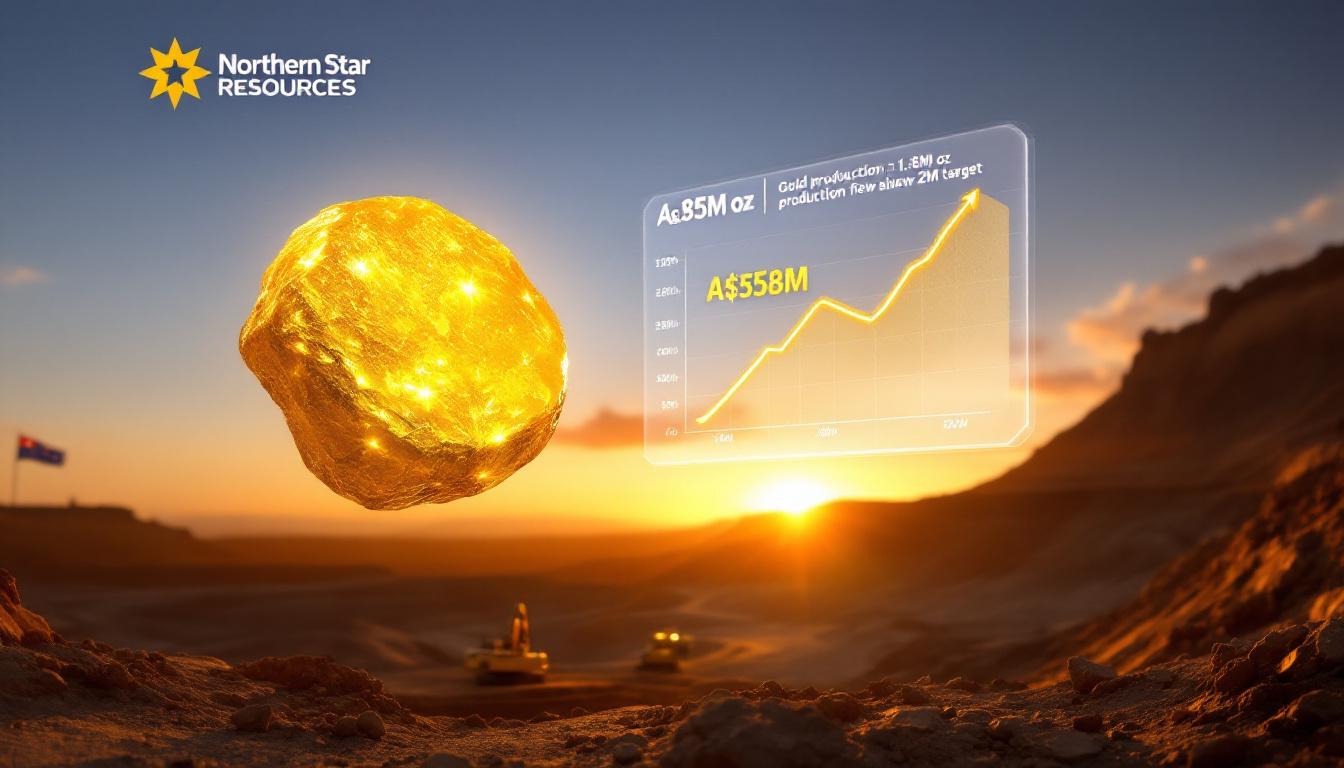What's Driving Copper Price Volatility?
The copper market has experienced significant price fluctuations recently, with multiple factors contributing to this volatility. Understanding these drivers is crucial for market participants navigating the complex landscape influenced by both economic indicators and geopolitical developments, particularly the US tariff moratorium period and LME copper prices.
US Labor Market Fluctuations Creating Market Uncertainty
Recent contradictory employment data has thrown markets into confusion, creating ripple effects across commodity markets, including copper. The ADP employment figures showed the largest decline since March 2023, initially signaling potential economic weakness. However, this was followed by an unexpected rebound in non-farm payrolls data, creating significant market confusion and volatility.
These conflicting indicators have had a pronounced effect on Federal Reserve interest rate expectations:
- Initial weak employment data boosted expectations for two potential rate cuts in 2025
- Strong non-farm payrolls subsequently reduced these rate cut expectations dramatically
- Dollar strength has fluctuated in direct response, creating copper price swings
"The contradictory employment indicators have created a push-pull dynamic in commodity markets," notes the Shanghai Metal Market (SMM) report from July 2025, highlighting how economic data uncertainty directly translates to price volatility.
How Are Tariff Policies Affecting Global Copper Markets?
Perhaps even more significant than labor data, the approaching July 9th tariff suspension deadline has created immediate pressure on copper markets. This deadline represents a critical inflection point that could reshape global metal trade patterns.
The current market dynamics include:
- Repeated statements by the Trump administration introducing uncertainty about future tariff strategies
- US Treasury Secretary applying significant diplomatic pressure for rapid trade negotiations
- Explicit warnings that tariffs may return to early April levels without quick agreements
- Deteriorating market risk appetite as tariff impact analysis persists
The potential reimposition of tariffs poses an existential threat to established supply chains, with metals traders particularly concerned about how quickly markets would need to adapt to new cost structures. The LME copper market has been particularly sensitive to developments related to the US tariff moratorium period, with prices reacting to each new statement or policy hint.
Current Copper Market Dynamics
The technical and price aspects of copper markets reveal how macroeconomic and policy uncertainties are manifesting in day-to-day trading patterns.
Price Movement Analysis
LME copper prices have demonstrated remarkable volatility while repeatedly testing the psychologically important $10,000/mt barrier. This key resistance level has proven difficult to sustainably breach despite multiple attempts. Simultaneously, Shanghai Futures Exchange (SHFE) copper has seesawed around the 80,000 yuan/mt level, creating parallel volatility in the Chinese market.
Recent price action shows:
- Initial price jumps on weak dollar expectations following disappointing employment data
- Subsequent pullbacks within the week as strong non-farm payrolls strengthened the dollar
- A clear correlation between dollar strength and copper price movements
- Growing risk of high-level price correction due to fundamental pressures
The interplay between these factors has created what technical analysts describe as a consolidation pattern below resistance, with traders cautious about establishing long-term positions while the US tariff moratorium period remains unresolved.
Technical Market Indicators
Beyond price action, several technical indicators provide deeper insights into market structure and sentiment:
- LME backwardation (near-term contracts trading at premiums to later months) has been narrowing
- LME inventory levels have halted their decline and begun to rebound
- The first batch of Chinese export cargoes has completed warehouse transfers
- The SHFE/LME price ratio has shown gradual recovery
- Spot market premiums remain persistent despite consumption challenges
These technical factors suggest a market in transition, with supply chains potentially repositioning ahead of the tariff deadline. The inventory shifts are particularly noteworthy, as they may indicate strategic positioning by market participants anticipating trade policy changes.
Supply and Demand Fundamentals
Understanding the fundamental balance of copper markets provides essential context for evaluating current price movements and forecasting future trends.
Current Market Balance Assessment
The current copper market exhibits a somewhat paradoxical state – characterized by both weakness in overall demand and persistent tightness in physical supply. This contradictory condition has several key aspects:
- Overall weak supply and demand conditions as reported by market participants
- High copper prices dampening downstream consumption enthusiasm
- Supplier reluctance to reduce prices despite consumption challenges
- Persistent tightness in physical market supply
- Low inventory levels supporting premium differentials
This unusual market balance suggests that while consumption may be price-sensitive, suppliers are maintaining discipline, perhaps anticipating supply chain disruptions if the US tariff moratorium period ends without new agreements.
"The divergence between tepid consumption and tight physical supply creates a precarious balance that could quickly shift if trade policies change dramatically," explains the SMM analysis.
Regional Market Variations
The global copper market is not homogeneous, with significant regional variations emerging:
- Chinese export dynamics are affecting global copper supply forecast distribution patterns
- Premium gaps between different copper brands have widened
- Domestic markets are experiencing weak supply-demand equilibrium
- Physical delivery constraints maintain spot premiums despite consumption weakness
- Inventory positioning increasingly affects regional price differentials
These regional differences highlight how global market participants are adapting differently to the uncertain trade environment, with some positioning defensively while others seek strategic advantages through inventory location or quality differentials.
What's Next for Copper Markets?
With volatility likely to persist, market participants are closely watching several factors that will shape copper prices in the coming weeks.
Short-Term Price Forecasts
Based on current technical patterns and fundamental factors, market analysts project:
- LME copper to fluctuate between $9,750 and $9,000/mt
- SHFE copper to trade between 77,500 and 79,000 yuan/mt
- Spot prices against SHFE copper 2507 contract likely ranging from +50 to +180 yuan/mt premium
These ranges reflect the ongoing uncertainty, with downside risks increasing as the July 9th tariff deadline approaches. The consumption weakness observed in physical markets could potentially trigger more significant price corrections if tariff negotiations fail to produce agreements.
Key Factors to Monitor
Market participants should closely watch:
- The approaching July 9th US tariff suspension deadline and related negotiations
- Potential escalation in global trade tensions beyond the current focus areas
- Further US labor market data releases that may influence Fed policy expectations
- Federal Reserve policy signaling about future interest rate paths
- Chinese export policies and physical delivery trends
- Inventory level changes across major warehouses globally
The confluence of these factors will determine whether copper price prediction models can maintain current levels or face more substantial corrections. The US tariff moratorium period resolution stands as the most significant near-term catalyst for market direction.
How Could Trade Policy Shifts Impact Global Metal Markets?
The potential end of the tariff moratorium represents a watershed moment for metal markets globally, with far-reaching implications beyond immediate price movements.
Potential Tariff Reimposition Scenarios
If negotiations fail and tariffs return to "early April levels" as warned, the consequences could include:
- Direct cost implications for cross-border metal trades, particularly affecting US copper production and imports
- Supply chain restructuring as buyers seek tariff-advantaged sources
- Regional price differential expansions as arbitrage opportunities emerge
- Inventory relocation strategies to position metal in advantageous jurisdictions
- Significant changes in hedging behavior among market participants
These effects would likely cascade through the supply chain, affecting not just traders but fabricators, end-users, and ultimately consumers of copper-intensive products.
Market Adaptation Strategies
Forward-thinking market participants are already developing contingency plans, including:
- Alternative sourcing considerations to minimize tariff exposure
- Pricing mechanism adjustments to account for potential tariff costs
- Contract structure modifications with flexible delivery terms
- Enhanced risk management approaches including options strategies
- Strategic inventory positioning across multiple jurisdictions
These adaptation strategies highlight the market's recognition that the end of the US tariff moratorium period could fundamentally reshape metal trade flows for years to come.
FAQ About Copper Markets and Tariffs
How do US labor market statistics typically impact copper prices?
Strong employment data often strengthens the dollar, which can pressure LME copper prices downward as the metal becomes more expensive for non-dollar holders. Conversely, weak employment data may signal economic slowdown but can support copper through dollar weakness and increased stimulus expectations. This relationship explains the volatile price action following the contradictory employment reports released recently.
What happens if the US tariff moratorium expires without new agreements?
If tariffs return to early April levels, we could see immediate price volatility, supply chain disruptions, and potential regional price disparities as market participants adjust to the new cost structures and trade flows. The most significant impacts would likely be on physical premiums and inventory movements as traders reposition metal to minimize tariff exposure.
Why does copper price often test psychological barriers like $10,000/mt?
Psychological price levels attract significant trading activity as they represent important technical and sentiment markers. These levels often feature concentrated limit orders, triggering increased volatility as the market tests support or resistance. For LME copper, the $10,000/mt level represents a historically significant threshold that has proven difficult to sustainably breach.
How do physical premiums relate to futures prices in copper markets?
Physical premiums represent the additional amount buyers pay above futures prices for immediate delivery of specific copper brands or locations. They reflect local supply-demand balances, quality differentials, and logistical constraints that futures markets don't fully capture. Despite the current consumption challenges, these premiums have remained firm, indicating persistent tightness in physical supply even as futures prices fluctuate.
Disclaimer: This analysis contains forward-looking statements about copper markets and potential tariff impacts. Actual outcomes may differ substantially from projections, and readers should consult professional financial advisors before making copper investment outlook decisions based on this information.
Want to Know When the Next Major Copper Discovery Happens?
Stay ahead of copper market volatility by receiving instant alerts on significant ASX mineral discoveries through Discovery Alert's proprietary Discovery IQ model, transforming complex market data into actionable investment insights. Explore how historic discoveries have generated substantial returns by visiting Discovery Alert's discoveries page and begin your 30-day free trial today to position yourself ahead of the market.




